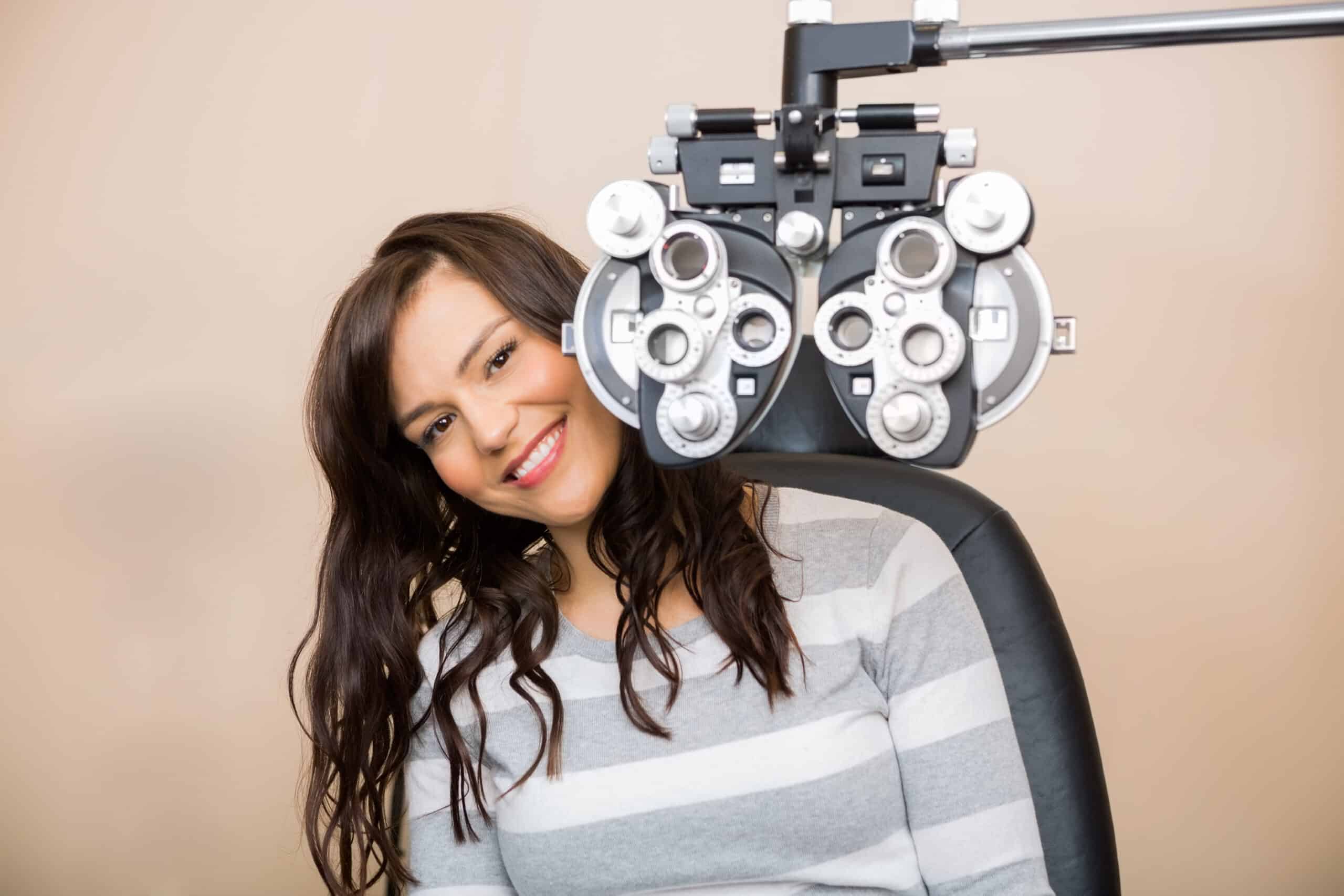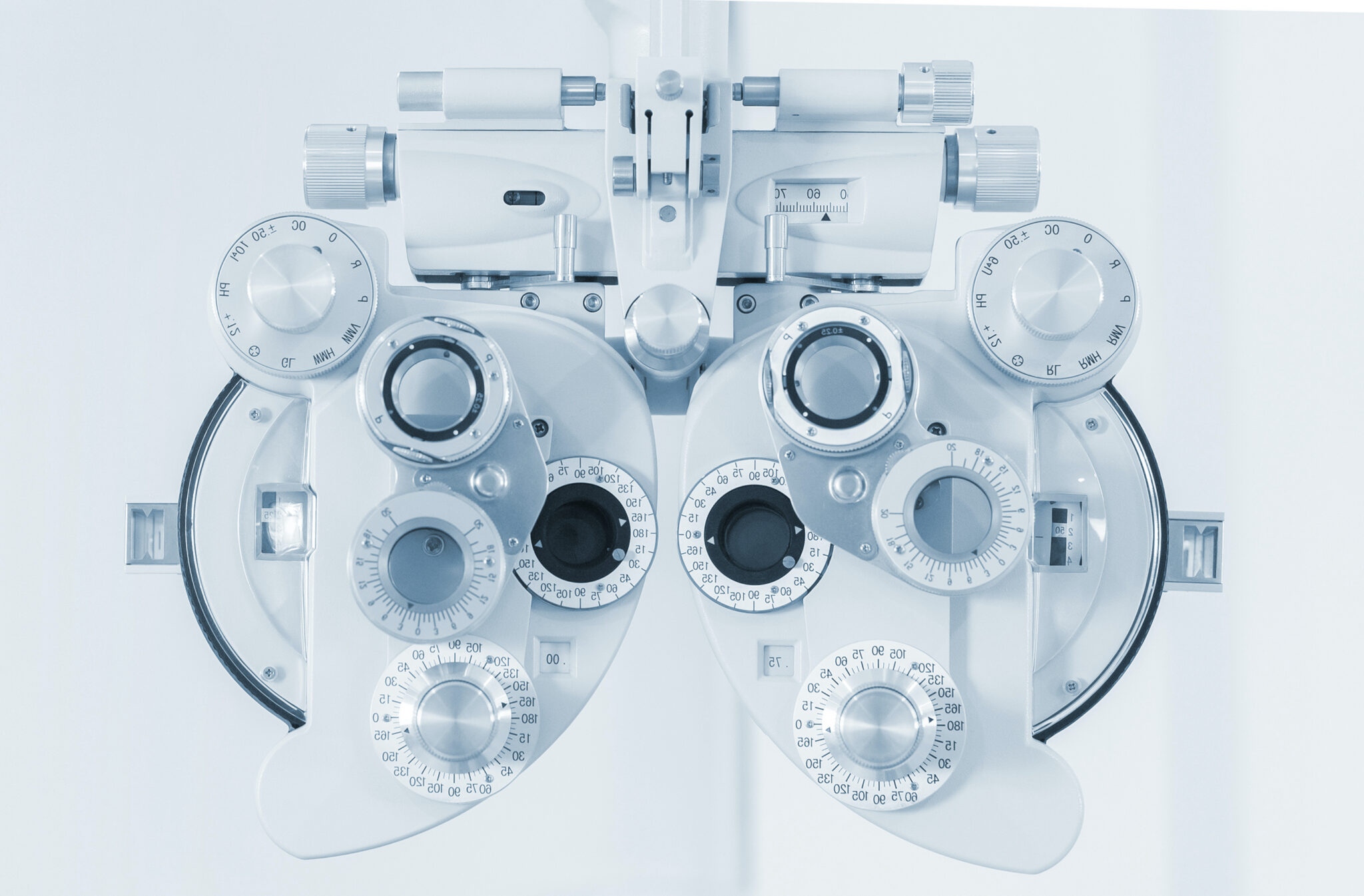
Comprehensive eye exams are one of the most important preventative health measures you can take. These exams go far beyond simply checking if you need glasses or updating your prescription.
Regular eye exams can detect early signs of serious eye conditions before symptoms appear, often when treatments are most effective. Many eye conditions develop slowly and painlessly, with no noticeable symptoms until significant, and even unreversible, damage has occurred.
Through advanced and thorough testing, our experienced eye doctors can identify early signs of conditions like glaucoma and macular degeneration before they threaten your vision. Beyond eye health, these examinations can also reveal signs of systemic health issues such as high blood pressure and high cholesterol.
The eyes are the only place in your body where blood vessels can be viewed directly without invasive procedures, making them valuable indicators of your overall health.
When you visit Kentucky Eye Institute for a comprehensive eye exam, you can expect a thorough evaluation that typically takes about an hour. Your appointment begins with a review of your medical history and any vision concerns you may have. This conversation helps your eye doctors understand any risk factors and tailor the examination to your specific needs.
First, your eye doctor or technician will test your visual acuity using the familiar eye chart to determine how clearly you can see at various distances. If needed, your doctor will determine your exact prescription through refraction testing.
Then, your eye movements and alignment will be assessed to ensure your eyes work together properly. Your eye doctor will also measure your eye pressure using a quick, painless test called tonometry, which is important for detecting glaucoma.
Next, your eye doctor will examine the front structures of your eye using a specialized microscope called a slit lamp, allowing them to get a good look at your cornea, iris, and lens. After dilating your pupils with special drops, your eye doctor can examine the retina and optic nerve at the back of your eye.
Dilation is a very important part of the eye exam because it allows your eye doctor to view the intricate structures at the back of the eye. Dilation typically causes light sensitivity and blurry near vision for a few hours, so bringing sunglasses can be helpful.
The frequency of eye exams should be tailored to your age, risk factors, and any existing eye conditions. For adults with good eye health and no risk factors, you will likely need an exam every two years.
However, if you are over 60, have diabetes, high blood pressure, or a family history of eye disease, or if you wear contact lenses, your eye doctor will likely recommend annual eye exams.
Your eye doctor at Kentucky Eye Institute will recommend a personalized schedule based on your specific situation. If you experience any changes in your vision or eye discomfort between regular exams, it’s important to schedule an appointment promptly rather than waiting.

Nearsightedness, or myopia, is a common condition where you can see objects clearly up close but struggle to focus on distant objects. This occurs when your eyeball is slightly longer than normal or when your cornea is too curved, causing light to focus in front of the retina rather than directly on it.
Most people with significant nearsightedness need to wear glasses or contact lenses to see clearly or might consider refractive surgery.
Farsightedness, or hyperopia, causes distant objects to be seen more clearly than near objects. In this condition, your eyeball is shorter than normal or your cornea is too flat, resulting in light focusing behind the retina instead of directly on it. The condition can cause eye strain, particularly when reading or using digital devices for extended periods. Like nearsightedness, farsightedness can be corrected with glasses, contact lenses, or surgical procedures.
Astigmatism occurs when your cornea or lens has an irregular shape, causing light to focus on multiple points within the eye rather than precisely on the retina. This creates blurred or distorted vision at all distances. Many people have some degree of astigmatism, often in combination with nearsightedness or farsightedness. Mild astigmatism may not require correction, but more significant astigmatism can cause headaches, eye strain, and squinting.
A comprehensive eye exam at Kentucky Eye Institute can detect numerous eye conditions, often before you experience any symptoms. Glaucoma, a leading cause of blindness, can be identified through pressure testing and examination of the optic nerve.
Cataracts, or clouding of the eye’s lens, can be detected through slit lamp examination. Macular degeneration, which affects central vision, may be identified by examining the retina.
Dry eye syndrome, which causes chronic irritation, can be diagnosed based on symptoms and examination of the tear film. Various corneal diseases, retinal detachments, and eye tumors may also be identified during these routine exams. Early detection of these conditions can preserve your vision.
Notice Only For Anthem Medicare Advantage Insurance Patients:
Dear Valued Kentucky Eye Institute Patient,
We want to make you aware of an issue affecting some of our patients who are Anthem Medicare Advantage members.
Recently, Anthem identified a credentialing error on their end that caused certain Kentucky Eye Institute (KEI) claims to be processed incorrectly as “out-of-network.” As a result, some patients may receive a letter from Anthem suggesting they seek care with another provider.
Please disregard any such letters. Kentucky Eye Institute remains in-network with all Anthem Medicare Advantage plans.
Anthem has already corrected the credentialing error on their end, and they are in the process of reprocessing all affected claims. No further action is needed from you currently. Our team is also actively monitoring the error with Anthem to ensure everything is appropriately resolved.
If you have received this letter and still have questions, please contact us directly at any of our locations: https://kyeye.com/locations/.
We’re here to support you and ensure your care continues without interruption. Thank you again for trusting Kentucky Eye Institute with your eye health.
Sincerely,
The Kentucky Eye Institute Team